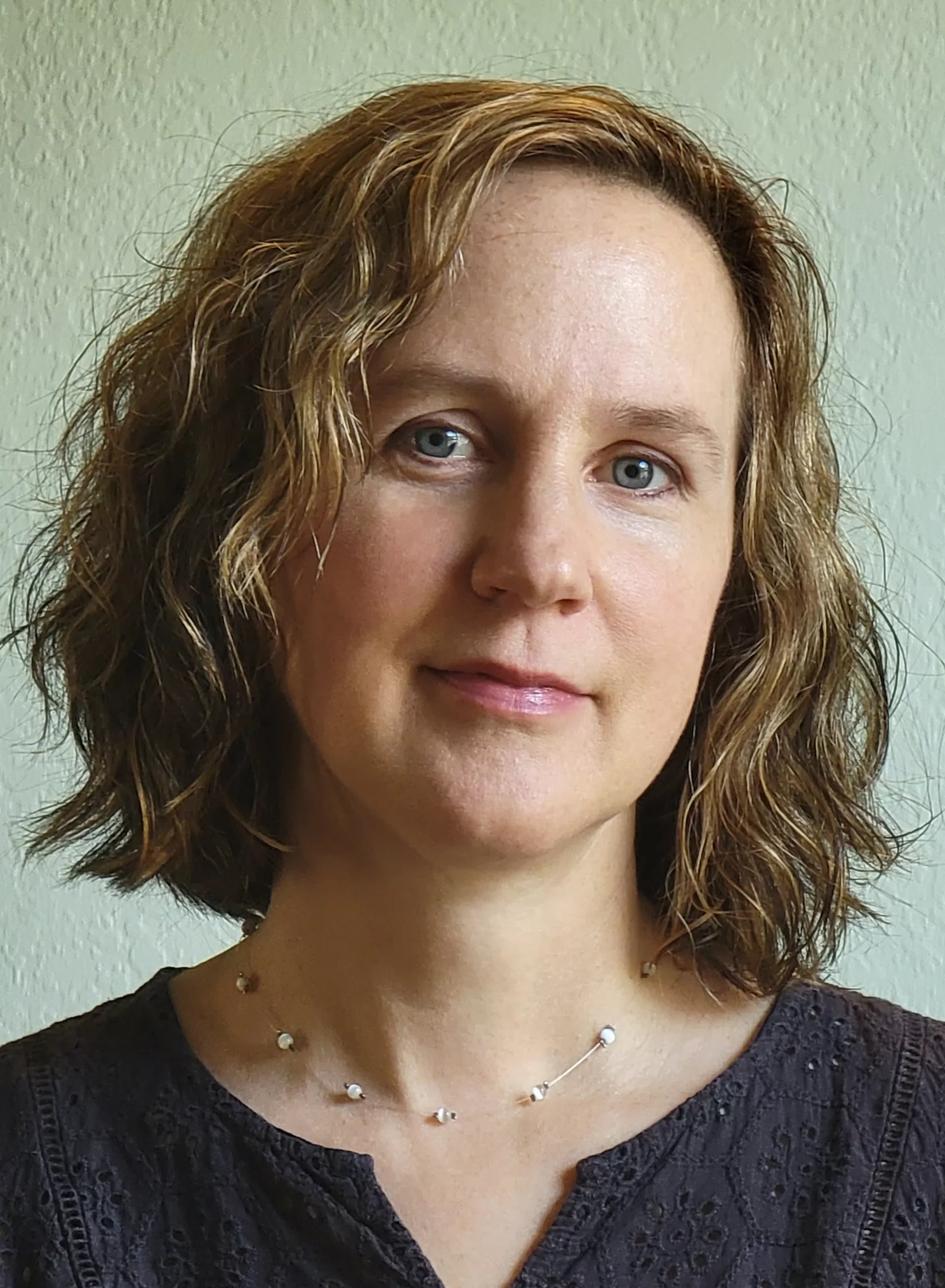Hey, everybody! Welcome back to “Through a New Wardrobe”, where we sit down and chat with some of today’s hottest writers who have been influenced by CS Lewis and the Land of Narnia. For today’s interview we sit down with author Sarah Arthur and discuss her new novel Once A Queen.
NARNIAFANS: Tell us a bit about yourself, for our readers that might not know much about you.
SARAH: I might be the only English major in history who, after college, was hired by a church to run their teen programming. I had no idea what I was doing. (“Paintball? What’s paintball?”) But I knew that stories can change the world. And I quickly learned that teens can, too. So, over time I began writing about the intersection of faith and literature for young people, starting with my surprise bestseller, Walking with Frodo: A Devotional Journey Through The Lord of the Rings. And I never looked back. Nearly all twelve of my nonfiction books have inhabited that space. And my master’s thesis at Duke Divinity School was about the role of imagination and narrative in the spiritual formation of young people. But now, at last, I get to return to my first love, which is writing the fiction itself. The best part? My own sons are now tweens/teens, and they love to hear me read my stories as I’m writing them.
NF: Can you give us a quick teaser for Once a Queen that will give us an idea of what we’re in for?
SA: It’s a portal fantasy that takes place during the summer of 1995, when American teenager Eva Joyce travels to stay at the strange estate of the English grandmother she’s never met. But mysteries abound, including why her parents and grandmother are estranged, and why her grandmother seems so deeply broken. And then magical things start happening in the gardens at night, and Eva catches glimpses of other worlds (or is she dreaming?). But Grandmother wants nothing to do with any of it. Will Eva be able to probe these mysteries without wounding her family further?
NF: What were your inspirations for the book?
SA : I’ve always loved English classics like The Secret Garden, The Chronicles of Narnia, and the stories of E. Nesbit—plus, lesser-known works like The Little White Horse by Elizabeth Goudge (one of J. K. Rowling’s favorites, in fact!). None of them are straight fantasy: They’re either magical realism, where things happen in our world that you can’t quite explain, or portal fantasy, where characters travel to other worlds/times and then return. With portal fantasy, in particular, there’s this delicious possibility of other worlds breaking in on this one, which the theologian in me finds irresistible. There are so many deep questions you can explore. Regardless, nearly all these classics begin with the main character(s) traveling to stay somewhere other than home—often to a strange country manor house full of mystery, amongst adults who are equally strange and mysterious. Honestly, I can’t think of a better set up!
NF: Can you discuss the complex relationship between Eva and her grandmother, and what you hope
readers take away from it?
SA: Eva is fourteen, which is that scary, wonderful stage when you’re beginning to realize just how broken are many adults around you. But they’re not talking about it. And maybe it’s because they’re in denial. Or maybe they’re trying to shield you from the fallout of generational trauma. And meanwhile, you’re still mostly a kid, so you have no idea if this is normal, or if it’s your fault somehow, or what. Learning how to love people who are deeply wounded is part of growing into maturity. This is Eva’s challenge. If she probes too deeply, she might push away the grownups she loves. But if she plays the denial game like everyone else, she might never discover the truth. And anyway, what if, in the end, that’s not actually the point? What if it’s about simply about loving broken people, regardless of the outcome?
NF: In what ways did C.S. Lewis inspire you as an author?
SA: In what ways didn’t he? I’m serious. His Chronicles of Narnia shaped so much of my theological imagination, my love of stories and storytelling, my work as a writer, that I can’t describe who I am without mentioning him. By high school, Mere Christianity had blown my mind wide open and solidified my faith in ways I’ll probably never be able to explain. And then I chose to attend Wheaton College, IL in large part because of its Inklings collection (featuring Lewis and friends) housed at the Marion E. Wade Center. Lewis also played a significant role in my husband, Tom’s return to Christian faith, (about which he contributed an essay for Mere Christians: Inspiring Stories of Encounters with C. S. Lewis, edited by Mary Anne Phemister and Andrew Lazo). Eventually, Tom and I became founding board members of the annual Northern Michigan C. S. Lewis Festival, which celebrates its 22nd year this September—and for which I’ll be one of keynote speakers. Oh, and it shocks no one that our youngest son’s middle name is…wait for it… Yes. Lewis.
NF: When and why did you begin writing?
SA: Honestly, I started by writing the kinds of books I wish someone had written for me when I was a kid. I’d spent most of my childhood without television, so I read constantly. I filled spiral-bound notebooks with stories. Not only did I love books themselves, I also loved their titles (e.g., Roll of Thunder, Hear My Cry; The Westing Game; From the Mixed-up Files of Mrs. Basil E. Frankweiler), and the impressive-sounding publishing companies (e.g., Knopf; Harper & Row; Farrar, Straus & Giroux). Best of all, I loved the way authors’ names sounded like poetry: Madeleine L’Engle, Scott O’Dell, Beverly Cleary. So, I knew, from those early years, that I wanted my name on the cover of a book. Lots of books. But at the same time, I was also this weird girl who was interested in theology. And I don’t mean I’d sit around reading Barth or something. I mean, I wanted to talk about God and the Bible, and where I saw faith showing up in great books. Those worlds weren’t separate for me. So that’s the writing space I’ve always inhabited, whether in my nonfiction or fiction.
NF: What are your current projects?
SA: Right now, the manuscript for book 2, Once a Castle, is hanging over my head like a guillotine. I do not have C. S. Lewis’s ability to write swiftly and confidently, amidst daily domestic challenges and cultural upheavals, while also wearing a public persona. I have the distractable brain of a squirrel but write like a snail. Perhaps I should switch up my approach and do all this with a dip-pen and ink, like Lewis did, just to see what happens. I don’t know. But I’m excited about book 2!
NF: Do you have any advice for other writers?
SA : Aspiring writers often ask me about “platform,” or that expectation in the entertainment / publishing industry that you’re building an audience of rabid fans. I’ll be honest: I have no idea what to tell people. It’s incredibly challenging to juggle the outward-facing side of publishing—in which you’re this “influencer” spreading the word about your books on social media and everywhere—versus the very focused, quiet, introverted work of carving words out of marble, which is what writing feels like for me. I’ve had to create clear boundaries of what I will and won’t do. Yes, I will post on Instagram. No, I will not blog for free. Etc.
NF : As someone who is passionate about getting young people to read, what reading rituals have you
practiced with your own children?
SA: We read together. We’ve been doing that since my sons were infants, and they’re now thirteen and ten. We read aloud, we read silently in the same room, we listen to audiobooks. Sundays are screen-free days in our house, so my husband will often take the boys on Saturdays to stock up at the local library. I read aloud the latest drafts of whatever novel I’m working on, and they share the stories they’re creating—whether it’s illustrated graphic novels or chapter books in Google Drive or, lately, stop-motion animation featuring warring stuffed animals. It’s like their version of C. S. Lewis’s childhood kingdom of “Boxen.” Who knows what future tales might come of it all?
Be back for Part Two of our series where we will discuss her novel more in depth.
